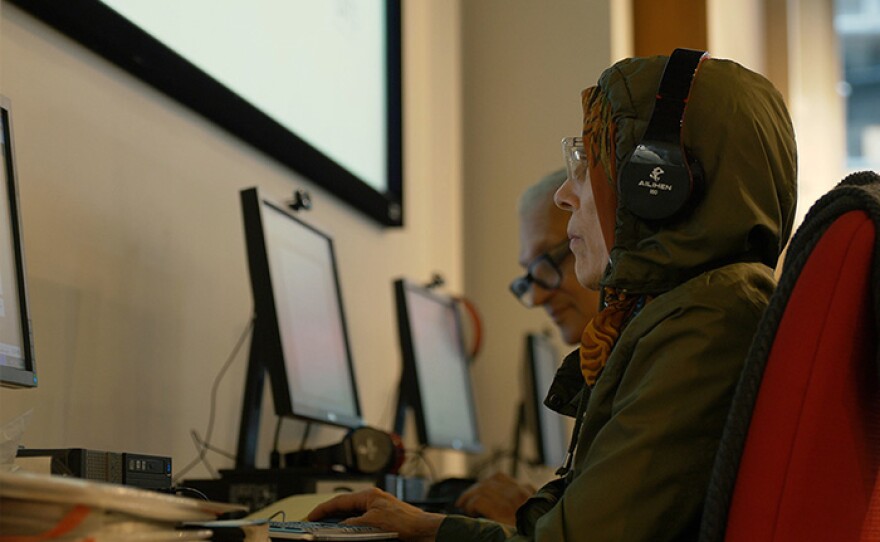Encore Tuesday, Jan. 18, 2022 at 11 p.m. on KPBS TV + Thursday, Jan. 20 at 9 p.m. on KPBS 2
Learn to identify fake news and evaluate the biases of legitimate news sources. At a time when the 24-hour news cycle reaches far beyond print and an endless trove of information is accessible with the click of a mouse, how can the average person learn to separate fact from fiction? And what does this mean for our democracy if we cannot grasp this important skill?
“Fake: Searching For Truth In The Age Of Misinformation” explores how and why this type of information spreads and how media literacy creates smarter citizens in an increasingly digital world.
Viewers learn to discern fact from fiction in news reports, identify fake news, and evaluate the biases of real news using common sense, critical thinking skills, and an understanding of universal standards of journalism. Just in time for the 2020 election, “Fake” examines why media literacy matters more than ever – for adults and their children alike.
1 of 9
Newsguard office, New York City.
Courtesy of American Public Television
2 of 9
“There’s definitely this tension in the United States between the freedom to access and publish information and the desire to have the issue of made up news somehow be addressed.”- Amy Mitchell, Director of Journalism Research, Pew Research Center (pictured).
Courtesy of American Public Television
3 of 9
“It’s a little bit of a cat and mouse chase. Every time we detect a new technique we see people inventing another technique.” -Camille Francois, Chief Innovation Officer, Graphika (pictured).
Courtesy of American Public Television
4 of 9
“Given how crazy this stuff seems, why is it that people could come to believe it? Shouldn’t our reasoning abilities allow us to see that this content is obviously not true? Just hearing a statement repeated, makes it seem more plausible.”- David Rand, associate professor at the Sloan School of Management and the department of brain and cognitive sciences at MIT (pictured).
Courtesy of American Public Television
5 of 9
“This is not a simple problem, and it’s not a new problem. It’s the problem that so much of democratic political theory, in its two thousand plus years, has been devoted to addressing.” - Jason Stanley, Jacob Urowsky Prof of Philosophy, Yale University (pictured).
Courtesy of American Public Television
6 of 9
“We can’t rely on the government to tell us what is fake news or not.” – Jonathan Corpus Ong, Associate Professor of Global Digital Media, University of Massachusetts (pictured)
Courtesy of American Public Television
7 of 9
“It’s really asking the question “What does it mean to be a literate citizen in today’s world?” - Michelle Ciulla Lipkin, executive director of the National Association for Media Literacy Education (pictured).
Courtesy of American Public Television
8 of 9
“It does seem like a very innocent time back 20 years ago when Jon Stewart started doing his show and people dubbed him ‘Fake News’.” -Patty Rhule, NEWSEUM VP, Content and Exhibit Development (pictured)
Courtesy of American Public Television
9 of 9
“The traditional media forgot two things in the last 20 years. First of all they forgot that their content is valuable and therefore if it’s valuable they should not be giving it away for free. Once you give it away for free you become solely dependent on advertising.” -Steven Brill, NewsGuard Co-Founder, and Co-CEO (pictured).
Courtesy of American Public Television
Watch On Your Schedule:
This film is available on demand.
With the PBS Video App, you can watch your favorite and local station shows. Download it for free on your favorite device. The app allows you to catch up on recent episodes and discover award-winning shows.
Credits:
An original documentary from Connecticut Public. Distributed by American Public Television.















